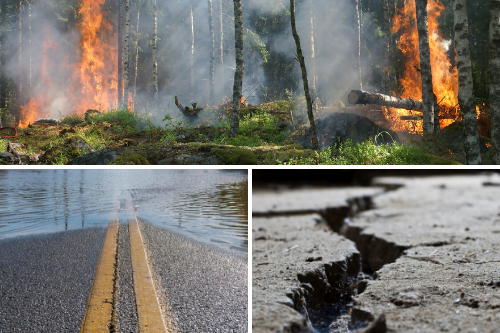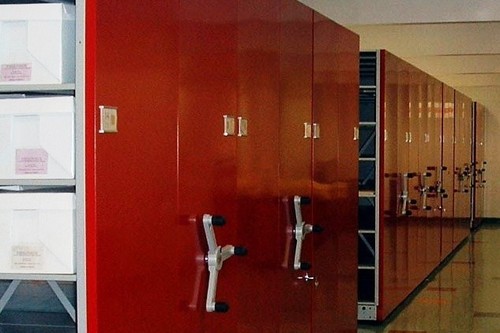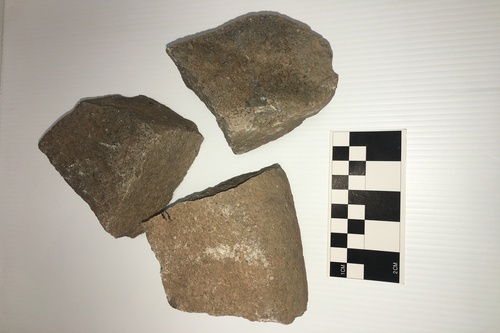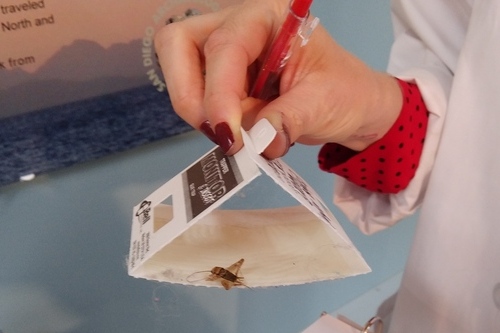
From Inside the Vaults: Emergency Preparedness Planning
From Inside the Vaults is a monthly blog that gives insight into best practices for collections stewardship, curation, and archaeological collecting institutions.
Why Is an Emergency Preparedness Plan Needed?
This year From Inside the Vaults has given insight into collecting institutions and how collections stewards follow different best practices that help ensure collections are kept safe from damage or deterioration. Many of the topics that have been discussed deal directly with conservation and planning, but what happens when an unplanned disaster strikes? Regardless of how much care and planning an institution puts forth for their collections, natural and man-made disasters are at times uncontrollable and have the potential to damage and destroy entire collections without any notice.
Many of the topics covered in this blog help to prevent damage that can occur from to collections. Like monitoring temperature and humidity, or by have an Integrated Pest Management plan in place. But those procedures are not enough. An Emergency Preparedness Plan should be in place at every collecting institution. By spending time and money on this plan and its implementation before a disaster strikes, institutions can protect artifacts and staff from damaging disasters that may occur.
What Emergencies Are Covered in the Plan?
Not all Emergency Preparedness Plans are going to be the same. When creating a plan, the collections team should assess the most likely types of disasters and problems first and then also have plans in place for the less likely issues that may occur. For example, in San Diego and Southern California, wildfires are prevalent and while surrounding communities work hard to prevent them, they can be unavoidable. Because of this reality, the SDAC spends a lot of time focusing on fire in its Emergency Preparedness Plan, especially because of where the facilities are located. While flooding is a less likely disaster, a plan is also in place for what to do in case of that type of emergency. Some examples of the emergencies that the SDAC has procedures for in its Emergency Preparedness Plan are fire, power outage, flooding/water damage, highway accidents, earthquakes, toxic events/chemical spills, and explosions.
What Does an Emergency Preparedness Plan Include?
By anticipating risks, mitigation can be more attainable. An Emergency Preparedness Plan helps an institution anticipate the risks for their collections. It clearly lays out responsibility, preparedness measures, and procedures that will help with a response to an emergency. The plan also informs on the recovery process of the artifacts after a disaster occurs. Responsibility and preparedness measures may cover a wide variety of activities. Doing research, gathering supplies and tools, making sure the supplies are available, collecting information about emergency services, reviewing insurance policies, and taking an inventory of the types of collections and the dangers they may face, are just some of the steps that should be taken before a disaster hits. Another very important step is to train all staff members on the response plan, in case a disaster does come without warning. When disasters occur, institutions should ask themselves how they would respond if they were affected. By doing so, it will become clearer whether or not an institution is prepared. The way a response is handled during and immediately after a disaster is vital for collecting institutions. Buildings and artifacts are assessed for damage when possible, and the problems are mitigated as much as possible. By having a recovery plan in place, collections materials can be moved and salvaged with priority, and if necessary conservation can begin immediately.
Conclusion
The act of creating an Emergency Preparedness Plan may seem like a daunting process, but it is necessary when caring for museum collections. By ensuring proper training of staff, creating mitigation procedures, gathering tools and supplies in advance, and identifying the risks of the institution, Collections Managers and teams will be much more prepared to react to a disaster and have an efficient recovery process.
Thank you for following along this year with our blog, From Inside the Vaults. Come back in 2020 where each month the SDAC will feature a unique part of archaeology and go more in depth into this fascinating branch of science with Arch 101: Exploring Archaeology. First upon the blog in January, Introduction to Archaeology. Enjoy the rest of 2019, we wish you all a happy and safe holiday season!
By Jessica McPheters, Collections Manager




